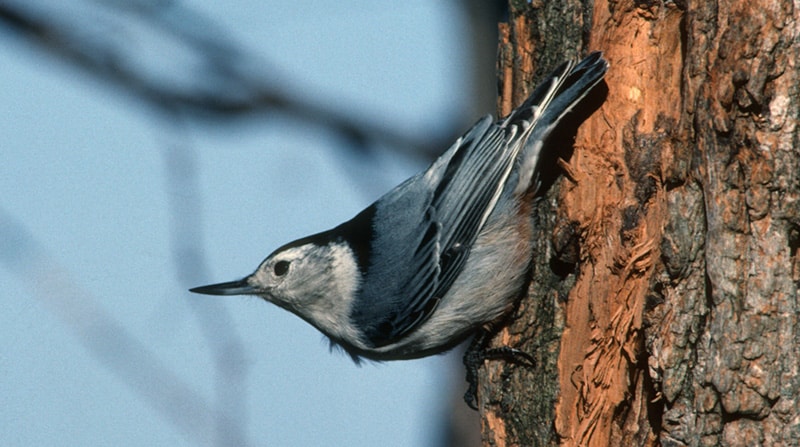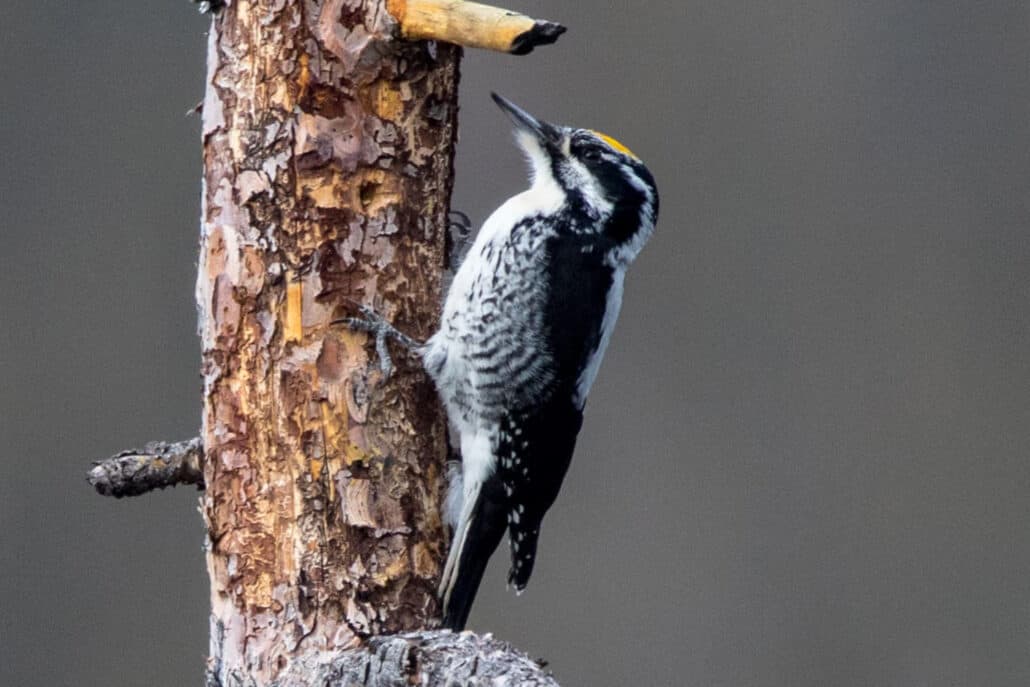South Carolina is divided into three major physiographic regions recognized by most geographers, the Blue Ridge Province, the Piedmont Province, and the Coastal Plain Province. Although some of the diverse array of natural habitats in the state overlap across provinces, others only occur in specific regions. This section will discuss a few of the major forest types that comprise each province, along with representative birds. For ease of discussion, many of the ecotones and other smaller components of our overall ecosystem will not be mentioned here.
Blue Ridge Province
The Blue Ridge Province consists of incredibly old mountains occurring as a narrow belt through the far western corner of the state covering three counties: Greenville, Pickens and Oconee. These mountains represent the leading edge of the southern Appalachians, forming what is known as the Blue Ridge Escarpment, an area of steep relief. The highest peak is Sassafras Mountain in Pickens County at 3,548 feet. Interesting physiographic features found here are waterfalls, plateaus, valleys, and gorges; monadnocks and rocky bluffs.
The upland oak forests of the Blue Ridge Province were once forested by the dominant American chestnut (Castanea dentata) that succumbed to blight in the early 20th century. These drier slopes and ridgetops are now forested by a variety of oaks and hickories including rock chestnut oak (Quercus prinus), scarlet oak (Q. coccinea), white oak (Quercus alba), mockernut hickory (Carya tomentosa), pignut hickory (C. glabra) and others. Components of the understory include flowering dogwood (Cornus florida), and sourwood (Oxydendrum arboretum). Representative birds found here include the blue-headed vireo, red-eyed vireo, white-breasted nuthatch, worm-eating warbler, ovenbird, and scarlet tanager.
The mixed mesophytic forest consists of diverse habitat types found on lower moist slopes, coves, and mountain streams. These habitats are characteristically quite rich in plant life. Along the lower slopes and coves, hardwoods typically dominate including tulip poplar (Liriodendron tulipifera), red oak (Quercus rubra), basswood (Tilia heterophylla), yellow buckeye (Aesculus octandra), and red maple (Acer rubra). Eastern hemlock (Tsuga canadensis) is abundant in wetter areas, particularly along streams; this tree is unfortunately threatened by spreading infestations of hemlock wooly adelgids. Rhododendrons and mountain laurel (Kalmia latifolia) are abundant in the understory. Birds found here include the broad-winged hawk, ruffed grouse, black-throated blue warbler, black-throated green warbler, Swainson’s warbler, and Louisiana waterthrush.
Piedmont Province
The Piedmont Province is a broad physiographic region characterized by rolling hills, plains, and river valleys. It extends from the foothills of the mountains to the fall line, an area marked by river shoals and rapids. The piedmont has a complex array of habitat types, much of which is the result of many decades of farming and corresponding land erosion. Much of the upland piedmont forests consist of an oak-hickory association, with varying degrees of diversity based on soil moisture and stages of succession. Many upland areas contain pine, whether planted or volunteer loblolly pine (Pinus taeda), or Virginia pine (Pinus virginiana) growing in successional old field situations. Shortleaf pine (Pinus echinata) often occurs as scattered trees in mixed forests along with white oak (Quercus alba), post oak (Q. stellata), water oak (Q. nigra), sweetgum (Liquidambar styraciflua), and others. Birds found here include the yellow-billed cuckoo, red-bellied woodpecker, great-crested flycatcher, blue-gray gnatcatcher, and eastern towhee.
The piedmont floodplain forests and associated slopes consist primarily of hardwoods, including river birch (Betula nigra), ash (Fraxinus species), willow oak (Quercus phellos), beech (Fagus grandifolia), and tulip poplar. Trees present depend on the amount of soil moisture and the successional stage of the forest. Extensive stands of switch cane (Arundinaria gigantea) occur in some areas. Riverine floodplains are generally good birding areas in spring, because they serve as migratory corridors for transient songbirds. Birds found here include the red-shouldered hawk, American woodcock, wood thrush, yellow-throated warbler, and Kentucky warbler.
Coastal Plain Province
The Coastal Plain Province is a broad plain of sandy soils that begins at the fall line and extends east to the Atlantic Ocean. The coastal plain is often divided into two regions, the inner and outer coastal plain. The inner coastal plain contains another unique region known as the sandhills, a hilly, deep sands region that borders the fall line. The sandhills is a dry, harsh region that supports a number of distinctive and adaptive plant species. Large areas of the sandhills are forested with turkey oak (Quercus laevis) and longleaf pine (Pinus palustris). Longleaf pine ecosystems also occur to some extent outside the sandhills and support interesting populations of birds, including the red-cockaded woodpecker, brown-headed nuthatch, pine warbler, summer tanager, and Bachman’s sparrow. Longleaf pine ecosystems are regarded to be fire maintained plant communities.
Cypress-tupelo swamps occur in low bottomland areas of the coastal plain, such as along river courses and in Carolina bays. These areas contain some amounts of flowing water, at least seasonally. Dominant trees present include bald cypress (Taxodium distichum) and water tupelo (Nyssa aquatica). Interesting features of these trees are their large-buttressed bases and in cypress, the formation of cypress knees. Old-age cypress trees form open towering canopies. A good place to observe birds in this habitat is along the boardwalk trail at Francis Beidler Audubon Sanctuary in Orangeburg County. In this rare example of an old-growth cypress swamp, such birds as yellow-crowned night-heron, barred owl, Acadian flycatcher, prothonotary warbler, and northern parula can be found.
The coastal maritime forests are influenced by wind and salt spray from the adjoining ocean and salt marsh habitat. As a result of this limiting factor, the forest is primarily vegetated by salt-tolerant species such as live oak (Quercus virginiana) and cabbage palmetto (Sabal palmetto) and further inland southern magnolia (Magnolia grandiflora). Along the southern tip of the coast slash pine (Pinus elliottii) also occurs. Bird species found in this habitat include the great-crested flycatcher, yellow-throated warbler, orchard oriole, and painted bunting, and in more open areas common ground-dove can be found. Along the edges, wax myrtles (Myrica cerifera) and groundsel (Baccharis halimifolia) form dense thickets that support white-eyed vireos, eastern towhees, and in winter numerous yellow-rumped warblers, palm warblers, and seaside sparrows along the marsh edge.




